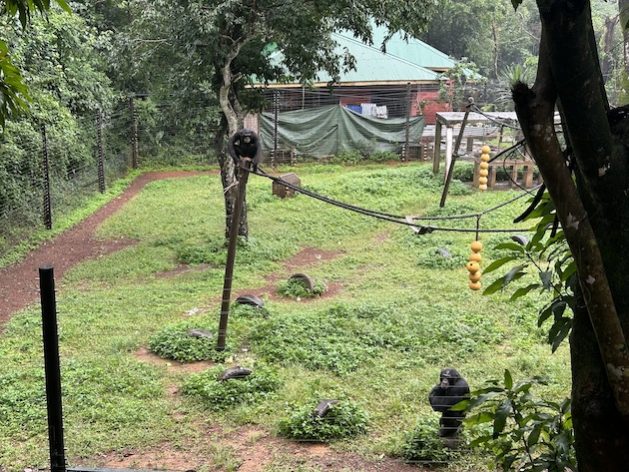
Credit: UNICEF/UNI403619/Karimi
KABUL, Afghanistan, Jul 26 2023 (IPS) – The needs of Afghanistan’s children and families are immense. So are the efforts of those supporting them: teams of community workers made up of family members, teachers in community-based schools, vaccinators, and health workers working around the clock to bring life-saving services in the face of an unfolding humanitarian catastrophe.
I recently traveled to eastern Afghanistan to meet some of the inspiring heroes who, this year already, helped UNICEF reach around 19 million children and their families with health and nutrition services.
UNICEF’s incredible health and nutrition response is supported by people across Afghan society. One of them is Mangal, a hero on two wheels. Every morning, Mangal picks up vaccines at a UNICEF-supported district hospital.
He carefully packs them in a cooler, which he straps to his motorbike before setting off to remote villages. Mangal braves rough, narrow roads, the scorching heat, and genuine security risks.
“I ride for nine kilometres every day to bring these vaccines to the people who need them,” he tells me. “They understand how important it is to protect their children from diseases. They don’t need any persuasion to come here. They greet me with gratitude and hope.”

A doctor prescribes medicine for mothers and children during a UNICEF-supported mobile health and nutrition team visit. Credit: Karim / UNICEF
Some of Mangal’s supplies land here, with a UNICEF-supported mobile health and nutrition team providing services straight to the communities who need them most and who have no other way to access health care.
Like so much of UNICEF’s health and nutrition work across Afghanistan, these programmes are game-changers.
But these teams have their work cut out for them.
“Nearly half of all children under five in Afghanistan are malnourished, a truly devastating number,” UNICEF’s head of nutrition, Melanie Galvin, tells me. “Some 875,000 of them are expected to need treatment for severe acute malnutrition, the most lethal form of undernutrition and one of the top threats to child survival across the globe.”
Ramping up the response means staffing up the response, too. UNICEF has more than doubled the number of places where a child can be treated.
“Last year we put more nutrition nurses and nutrition counsellors into overflowing hospitals,” Melanie says. “We put them directly into communities where people live. We put them into mobile clinics that reach very small and isolated populations. We put them into day care centre spaces in poor urban areas.”

A child receives RUTF during a visit by a UNICEF-supported mobile health and nutrition team. Credit Karim/UNICEF
Mobile health and nutrition teams are critical in reaching rural areas with basic services like pre-natal checkups, vaccinations, psycho-social counselling, and ready-to-use therapeutic food (RUTF). It’s a heartbreaking condition to see up close. In this photo, little Zarmina receives an RUTF sachet from Melanie.
RUTF really is a magical paste – energy dense and full of micronutrients. Used to treat severe acute malnutrition, also known as severe wasting, RUTF is made using peanuts, sugar, milk powder, oil, vitamins and minerals, and has helped treat millions of children in Afghanistan.
As we tour a hospital, Dr. Fouzia Shafique, UNICEF Afghanistan’s Principal Health Advisor, explains how UNICEF has managed to support so many children, despite all the challenges.
“Health clinics, family teams of community workers, community-based schools, vaccinators, and trained female health workers,” she tells me. Donors such as the World Bank and Asian Development Bank have also been critical partners, helping UNICEF provide care even in difficult-to-reach areas of the country.
So many of the life-saving interventions I encountered on my mission are made possible by the tireless work of UNICEF staff such as Dr. Shafique and Dr. Nafi Kakar, who fill a multitude of roles, including inspecting vaccines and parts of the cold chain system that is used to store them.
Helping families access quality primary and secondary health care means supporting thousands of health facilities, covering operating costs, paying the salaries of tens of thousands of health workers, and procuring and distributing medical supplies.
Together, these efforts are helping UNICEF reach many of the more than 15 million children in Afghanistan who need support. It’s a difficult number to comprehend, but easier to appreciate when you meet some of those very same children.
There’s the baby fighting for her life in an incubator; the children working for their families in fields of unexploded mines; the children grappling with the anxieties and pressures of poverty; or the girls deprived of their greatest hope – education. Each child is like my own. Unique. Each child is special.
The smiles say it all: For Dr. Shafique and young girls in Afghanistan, it’s been a good day. But there remains so much to do. Supporting the health and well-being of people in Afghanistan isn’t only about access to health services, it’s also about the protection of rights – notably, ensuring rights and freedoms for women and girls.
Given the enormity of UNICEF’s role in the health and nutrition sector, it’s critical for UNICEF – and for children in Afghanistan – that funding is maintained. So that the country’s children can grow up safe, healthy and be the heroes in their own stories.
Source: UNICEF Blog
The UNICEF Blog promotes children’s rights and well-being, and ideas about ways to improve their lives and the lives of their families. It also brings insights and opinions from the world s leading child rights experts and accounts from UNICEF s staff on the ground in more than 190 countries and territories. The opinions expressed on the UNICEF Blog are those of the author(s) and may not necessarily reflect UNICEF s official position.
James Elder is UNICEF Spokesperson in Afghanistan.
IPS UN Bureau








